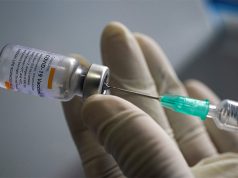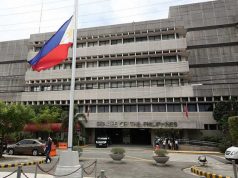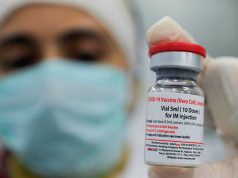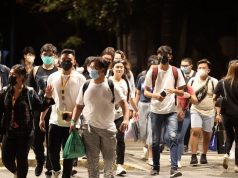
The detection of a new COVID-19 variant seven months after its sample was taken from a patient spurred concerns on the process of detection of health authorities.
The Department of Health on Monday announced that the B.1.1.318 variant, which caused a surge in infections in Mauritius, was first detected from a 34-year-old male who arrived in the Philippines on March 5, 2021.
The DOH said that he had a travel history in the United Arab Emirates and has a local address in Bacolod City in Negros Occidental.
His sample was taken on March 10 from the Philippine Red Cross (PRC) laboratory. He recovered on March 21.
DOH Undersecretary Maria Rosario Vergeire said that the Philippine Genome Center detected the variant from the 746 swab samples that were sequenced last October 22.
The specimens were collected in March, April, September and October as part of the “retrospective” sampling being done to trace the beginnings of the Delta variant in the country.
“Gusto natin malaman na in the previous months ba, ay mayroon na tayong mga ganitong variant. We do that for us to further analyze paano natin maisasama natin ‘yan sa mga response na ginagawa natin ngayon,” Vergeire said in a press conference.
Last October 4, Vergeire said that PGC was preparing to process 1,500 samples per week from its original capacity of analyzing 750 samples.
She added that it was also training its teams for satellite laboratories in the Visayas and Mindanao which could be operational in November.
The B.1.1.318 variant was designated as a “variant under monitoring” by the World Health Organization last June 2.
Vergeire said that “there is no cause to panic” but cautioned the public to remain vigilant by strictly following the minimum health protocols such as the wearing of face masks and shields and practicing physical distancing.
‘Ngayon lang?’
Following the reports, some Filipinos noticed the months-long gap of its detection, from the time the sample was initially taken for genome sequencing.
“Patient has recovered noong March 21 pa. So bakit ngayon lang ito dinisclose sa public? The sample was taken 7 months ago. YES, genomic sequencing takes time and this variant is currently under monitoring pero it took them 7 f**king months to disclose this to the public?” a Twitter user said in response to the reports.
“Akala ko nagkamali ako (sa) nabasa ko. October pa, November (na) po,” another online user said with a flushed face emoji.
“March pa nakuha, ngayon lang nalaman?” a different Filipino tweeted.
“March 10 pa na-detect, matatapos na ang October… Anyare po?” another Twitter user commented.
Earlier this year, Filipinos demanded transparency in reporting new COVID-19 variants when the health department announced that it detected the B-117 variant, now known as the Alpha variant.
It was first reported in the United Kingdom in October 2020.
The DOH initially refuted claims of its presence in the country but five days later, it released a statement confirming the Alpha variant.
The denial came four days after the patient had arrived in the country.
RELATED: Demand for transparency on new COVID-19 variant detection as Philippines detect first case
More about the variant
According to the WHO, the earliest documented sample of the B.1.1318 variant was last January. It was tagged as a variant under monitoring five months after.
Reports said it has 14 mutations, including those present in the Delta and Beta variants, such as the E484K which could evade vaccine efficacy, and the P681H which is responsible for increased transmissibility.
As of June, studies said that the particular variant has been detected in at least 34 countries.
Reuters previously reported that according to the Public Health England, the B.1.1.318 was understood to have originated in the United Kingdom.
A variant under monitoring is defined by the WHO as the following:
“A SARS-CoV-2 variant with genetic changes that are suspected to affect virus characteristics with some indication that it may pose a future risk, but evidence of phenotypic or epidemiological impact is currently unclear, requiring enhanced monitoring and repeat assessment pending new evidence.”
In its recommendations, the United Nations agency said that member states should enhance their efforts towards providing “a more representative picture of circulating variants in the country.”
WHO added that complete genome sequences and associated metadata should be submitted to “a publicly available database, like GISAID.”
It also said that countries should “perform field investigations to improve understanding of the characteristics of the VUM (variant under monitoring), conduct laboratory investigations” and monitor its spread and other interaction with other circulating variants.









